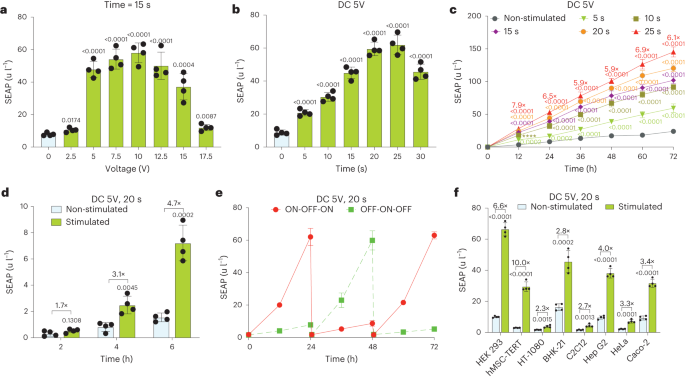There is currently an explosion of interest in medical wearables, which are health-centric portable technologies such as fitness trackers, biosensors, blood pressure monitors, and portable electrocardiogram devices.
“Electrogenetic interfaces that would enable electronic devices to control gene expression remain the missing link in the path to full compatibility and interoperability of the electronic and genetic worlds,” the researchers added.
With that in mind, the team aimed to forge a direct connection between our “analog” DNA, which is the biological alphabet that governs the life-cycles of all organisms on Earth, and the electronic systems that form the basis of digital technologies.
Scientists Control Human DNA with Electricity in 'Leap Forward', Study Reports
Breakthrough research represents “the missing link that will enable wearables to control genes in the not-so-distant future,” researchers say.
Breakthrough research represents “the missing link that will enable wearables to control genes in the not-so-distant future,” researchers say.
“While biological systems are analog, programmed by genetics, updated slowly by evolution and controlled by ions flowing through insulated membranes, electronic systems are digital, programmed by readily updatable software and controlled by electrons flowing through insulated wires.”
- The same group at ETH Zürich had originally demonstrated that genes could be electrically activated as part of a study that was published in 2020.
- This new modified design simplifies the initial design by implanting human pancreatic cells into mice with type 1 diabetes.
- The researchers then used electrically-stimulating acupuncture needles to switch on the exact genes involved in regulating doses of insulin, a hormone that is essential for the treatment of diabetes.
- As a consequence, the blood glucose concentrations of the model mice returned to normal levels.
Huang and his colleagues said this electrical fine-tuning of mammalian gene expression sets the stage for “wearable-based electro-controlled gene expression with the potential to connect medical interventions to an internet of the body or the internet of things,” according to the study.
- “While we chose DART-controlled insulin production for proof-of-concept validation, it should be straightforward to link DART control to the in situ production and dosing of a wide range of biopharmaceuticals,” the team concluded.
“We believe simple electrogenetic interfaces such as DART that functionally interconnect analog biological systems with digital electronic devices hold great promise for a variety of future gene- and cell-based therapies.”






No comments:
Post a Comment